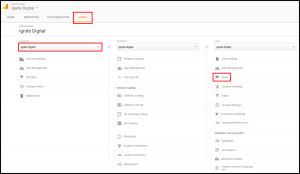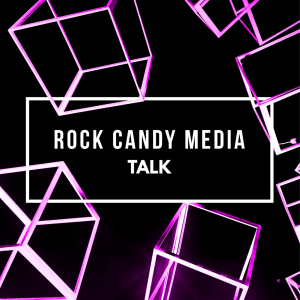
SEO is a scary “place” for a business owner to go. It’s scary because s/he has products and/or services to offer and is not a content specialist. And, who knows what these search engines want these days? It used to just get keywords in – as many as possible – and cross your fingers that engines would crawl through and find them multiple times.
Things have changed. And although search engines like Google protect their new algorithms carefully, there are hints about what types of content are consistent “winners” in this SEO game. Those hints come from some simple research – when a keyword/phrase search is done, what types of content are coming up on Google’s first page? Here is what you will find as the most common.
1. Long-Form Articles
What long-form content can do for you is to make you look like an expert. This increases the chances that people with engage with it and share it. The more sharing, the better your search engine results.
Many experts state that content pieces should be a minimum of 1,200 words, but content writers should shoot for more, perhaps as many as 2,000.
While no one knows Google’s algorithm, here are what engineers have been able to discover. The average content length of the top 10 results was over 2,000 words. Average length for #1 was 2,416; for #10, average was 2,032.
Even Google hints at this. Pandu Nayak, from Google’s technical staff, has said:
Users often turn to Google to answer a quick question, but research suggests that up to 10% of users’ daily information needs involve learning about a broad topic. That’s why today we’re introducing new search results to help users find in-depth articles.
2. Blog Posts With Carefully Chosen Keyword Phrases
While some are holding “wakes” for keywords, not so fast. Yes, keyword specificity may be dying, but it is morphing into something else. What Google is doing more of, actually is analyzing your content, interpreting it, and concluding on its own what your business is actually all about. If you use a single keyword or phrase several times in your article – the tag, the title and then more in the body – you may not get the results you want.
Google also looks for synonyms. Thus, ”computer repair shop” can be “computer repair specialists” or “tech repair facility.” Google will derive the same meaning from these phrases.
What this means for you is that you want to optimize your site and your articles for meaning rather than a specific word or phrase.
The focus on meaning rather than words is also being incorporated into user searches. So, if a user searches for “cheap steaks in St. Louis,” if only keyword specificity were used, Google would be pulling up titles with “cheap,” “steaks,” and “St. Louis.” The user would get a hodge-podge of results. Instead, Google is now looking for an interpretation of the phrase, perhaps “inexpensive steak restaurants in St. Louis.” If you have any of these words, and your content relates to your restaurant that has inexpensive steaks, you may indeed be found, even if you do not have the exact phrase of the user search. Again, this should tell you to focus on meaning rather than exact keywords and use as many synonyms as possible.
3. Evergreen Content
You have probably noticed that when you conduct an organic search, you may find articles that are 2-3 years old showing a high rank. This is because they are still very relevant – they comprise evergreen content. While it takes more time to craft, it has “saying power” because it still solves a problem for audiences and potential audiences to come.
If you want posts with longer “shelf life,” consider these elements:
- High-quality content that is useful, interesting, and/or valuable to the audience
- It relates to a need that your audience has
- It will have an engaging headline that makes a reader/viewer to go on.
- The content itself keeps a user reading or viewing for a while. The longer users stay, the better Google interprets it.
- Readability. Text must be divided into chunks with sub-headings and bullets. And divide it up with visuals.
- It doesn’t lose relevance quickly. If you sell paint and stains, for examples, articles that are “how to” will not lose value over time. Occasionally they may need to be updated as new tools, etc. are available, but that is easily done.
The idea of evergreen content is that people will still be searching for your content over time – not your original audience but new users who become part of that audience over time.
4. Tools That Provide Interactivity
You’ve seen them on Facebook – quizzes and surveys to take. They’re quite popular. These are two forms of interactive content, but there are others. Any time that you can get your audience to actively participate in your content, they will stay longer and they will share that content with their communities. These things make search engines happy. Here are some tools you can use to create interactive content:
A. Qzzr
No matter how little skill you have, if you have a creative bent, you can use this tool to create quizzes. You can craft your questions and add backgrounds and images of each question.
Three types of quizzes can be made – the “Which one are you,” the “How much are you” and the “How much do you know” types.
You can embed quizzes in your content or craft a longer quiz as a stand-alone. People love to take quizzes and get information about themselves as a result. You can even create serious quizzes, such as those produced by the American Heart Association for individuals to assess their own heart health.
There are both free and premium options.
B. Infogr.am
When viewers can visualize the information and data you have to share, they are more apt to stick around. If you make it interactive, they are apt to stick around even longer. This tool allows you to craft interactive charts, graphs, and maps. It has a large library of designs, and you can tweak colors and even add animation. There’s a free and premium version.
C. EasyPolls
This is one of the easiest tools to be found. You create an account, log in each time you want to create a poll, put in your question(s) and options, and choose a color. It really is that simple. You can embed the poll in your content, and include a reference to it in your title to create interest.
D. SnapApp
This is an all-purpose tool for creating all types of interactive content, from quizzes to video. It has software for DIY, or you can help the SnapApp team for design.
5. Galleries – Photos Or Other (E.g. Styles Of Jeans)
Visual content is far more popular than text, so any time that you are able to replace words with visuals, do so. This means people will stay longer. E-commerce sites with catalogs are great examples of this, but so are other industries, such as travel sites.
6. Lists
You cannot go wrong with list content, so long as the list is legitimate and satisfies a need, whether that is for information/education, humor or inspiration. Choose your topic and then a number of items you intend to include – 15 Ways to Improve your Content, for example. When you craft that list, use simple language, and provide just a short intro and conclusion. There is no ideal number for your list – just make each item detailed and relevant to the topic.
7. Titles That Lead Readers To More Resources
Here is an entry on the first page of a Google search for “Best CRM tools for small businesses. When you can provide great resources to searchers and speak to that in your title, you will have a popular piece of content. You may want to provide your own short intro to each resource.
8. Videos
Reducing great content to videos – either stand alone on YouTube or on your site can be a big draw. Searchers love to learn by video – how-to’s or explainers. Some of these have the potential to go viral, such as that created for Dollar Shave Club – an explainer video infused with hilarity – one that has received almost 30 million views to date.
9. Guides
Now, a guide is definitely long content – sort of like a series of blog posts rolled into one. They are great content pieces for search engines to pick up.
Content in a guide must be superior and in high demand; it must be sprinkled with lots of visuals and have a great design for attractive presentation. Sometimes it’s a good idea to present it as a PDF that is downloadable. The more a guide is accessed and downloaded, the more Google notices.
Keep in mind that language should be simple unless it is highly technical.
SEO is an ever-evolving activity of research, learning what types of content are the most optimized, and then modifying strategies and tactics to keep search engines happy, It’s a business and brand promotion that cannot be ignored.
* Adapted lead image: Public Domain, pixabay.com via getstencil.com
The post 9 Content Types Search Engines Love appeared first on Search Engine People Blog.
(80)









